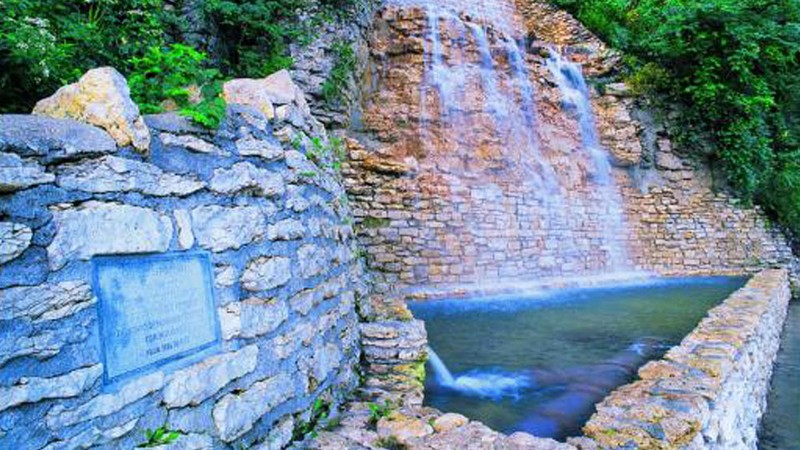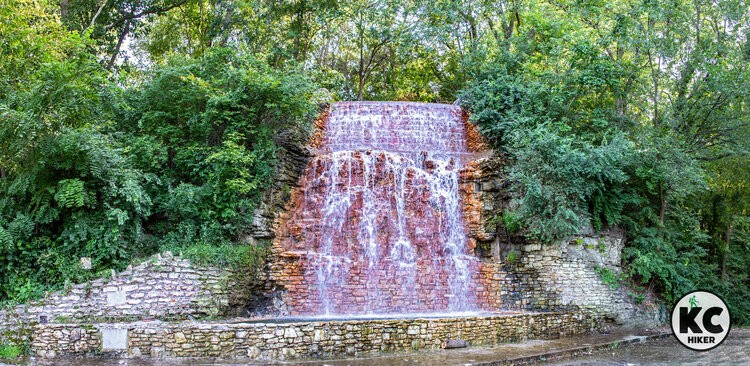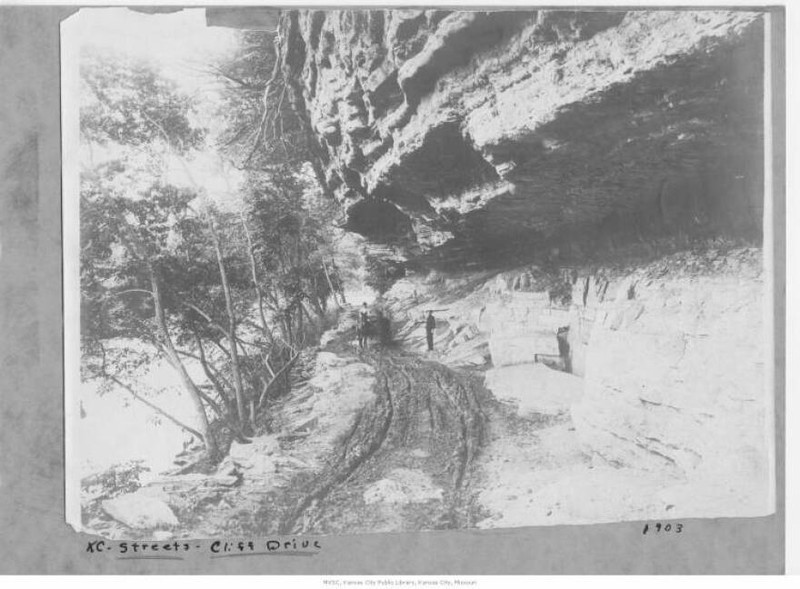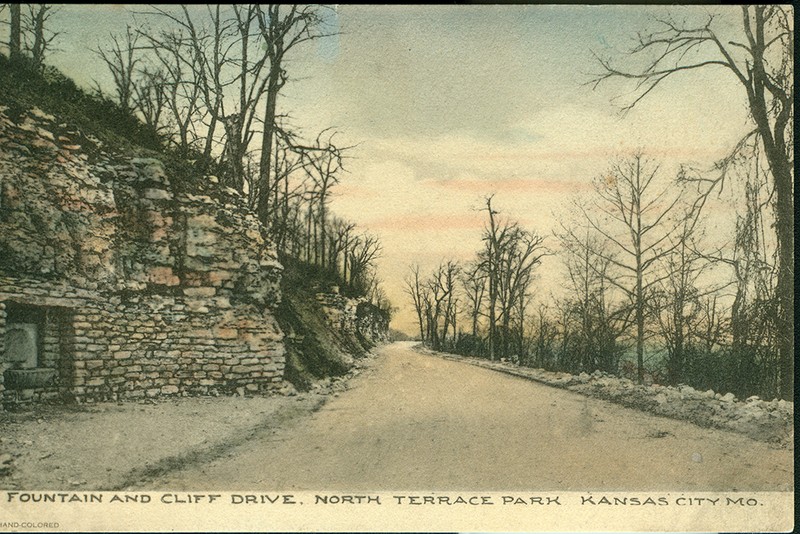Carl J. Dicapo Fountain at Kessler Park
Introduction
Text-to-speech Audio
Although Cliff Drive, where one can find the historic fountain, was purchased from the wealthy Reverend Nathan Scarritt around the turn of the twentieth century, the forested rocky bluffs rising 250 feet above the Missouri River served Native Americans in the area for centuries before white settlement. Since then, for more than a century, Kansas City residents have enjoyed the river bluff environment now known as Kessler Park, including the waterfall known as Carl J. Dicapo Fountain.
Images
Carl J. Dicapo Fountain

Carl J. Dicapo Fountain

Kansas City's Cliff Drive existed merely as a horse and buggy trail when this photo was taken in 1903

Kansas City's Cliff Drive and the natural spring fountain as of 1910

Backstory and Context
Text-to-speech Audio
Scarritt and his family were early settlers in Illinois before moving to Missouri in the mid-1820s as pioneers. Though serving as a Methodist minister was his primary profession, he also became a wealthy farmer and businessperson. Before obtaining his wealth, he preached to the Kickapoo, Shawnee, Wyandot, and Delaware Indians in the Kansas Territory. But, the combination of the bloody Kansas Statehood debates and the onset of the Civil War pushed Scarritt to move with his wife and nine children into a log cabin at the bluffs of the Missouri River near today's Kessler Park and Carl J. Dicapo Fountain.
At the bluffs, Scarritt established a thriving farm and built a large home, the genesis of what evolved into magnificent neighborhoods along Cliff Drive. The natural spring not only supplied drinking water to the family, but also provided them with natural refrigeration; they kept their milk and butter chilled in the waters. In the final decades of his life, Nathan Scarritt deftly invested in property made valuable by Kansas City's rapid growth; he left a fortune of several million dollars to his children after he died in 1890 at the age of 69. The park, acquired in 1899 from the Scarritt estate, received the name North Terrace Park and included by 1900 the drive on Cliff Drive that twisted through 308 acres of wooded hills and canyons. The city also developed a water basin around 1907 to collect the spring water. The park project gets its inspiration from lauded landscape architect George E. Kessler, for whom the modern park derives its name, as he passionately championed the development of Kansas City's natural terrain and rugged beauty.
The beautiful roadway was a favorite of horse and buggy drivers; automobiles were forbidden access because of the danger of a horse being frightened and plunging off the cliff's edge. From long before white settlers arrived until the 1960s, the spring near the east end of Cliff Drive proved highly attractive because it offered clear, pure drinking water. However, when the automobile supplanted the horse and buggy as the favored mode of transportation, the park had to adapt. Eventually, the park allowed sight-seeing tour busses to travel in the park, many of which stopped at the spring. The constant flow of traffic, both human and vehicular, led to water contamination, resulting in its closure in 1962.
However, from that contamination came the new fountain, an artificial version of the original spring. During a 1980s restoration project, the city transformed the covered spring into an eye-catching waterfall, named for Carl DiCapo – a Parks Commissioner. The fountain's purpose draws attention to the natural cliffs and spring water utilized by settlers of the northeast area since the 1800s and the generations of indigenous people before white settlement transpired.
Sources
Bushnell, Michael. "Beauty Springs eternal on Cliff Drive." Northeast News. northeastnews.net. April 25, 2018. http://northeastnews.net/pages/beauty-springs-eternal-cliff-drive/.
"Carl J. Dicapo Fountain." KCParks.Org. Accessed July 15, 2022. https://kcparks.org/places/carl-dicapo-fountain-2/.
Coleman, Daniel. "Nathan Scarritt Methodist Minister and Teacher 1821-1890." The Kansas City Public Library. kchistory.org. 2007. https://kchistory.org/islandora/object/kchistory%3A115356/datastream/OBJ/view.
"George E. Kessler." Kessler Society of Kansas City. Accessed July 15, 2022. http://www.georgekessler.org/.
"Kessler Park." KCParks.Org. Accessed July 15, 2022. https://kcparks.org/places/kessler-park/.
Mallea, Amahia K. A River in the City of Fountains: An Environmental History of Kansas City and the Missouri River. Lawrence: University of Kansas Press, 2018.
Ziegler, Laura. "Cliff Drive Began With Aristocratic Kansas City Family." NPR Kansas City: KCUR. kcur.org. June 26, 2014. https://www.kcur.org/2014-06-26/cliff-drive-began-with-aristocratic-kansas-city-family.
https://kcparks.org/places/carl-dicapo-fountain-2/
https://www.kansascityhiker.com/jackson-county-trails/cliff-drive-kessler-park
https://www.kcur.org/2014-06-26/cliff-drive-began-with-aristocratic-kansas-city-family
http://northeastnews.net/pages/beauty-springs-eternal-cliff-drive/
